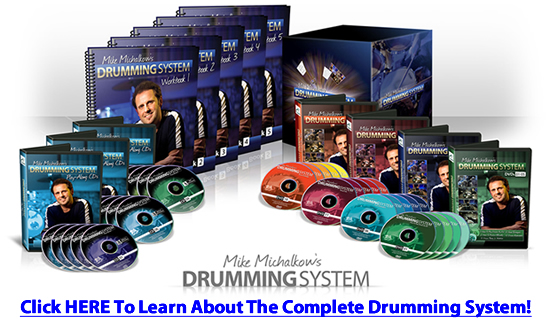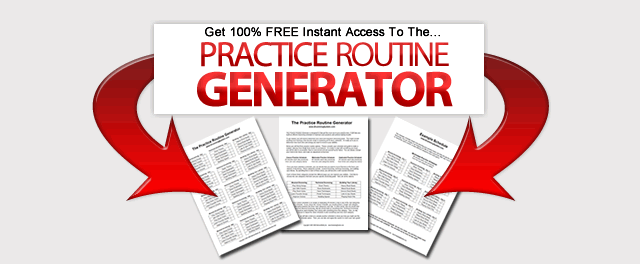Play Drums Today
<<< Back to Learning Drums Articles
You Can Start Playing Drums Today!
 So you are interested in learning to play the drums! What do you do now? Here are some pointers to help you get started.
So you are interested in learning to play the drums! What do you do now? Here are some pointers to help you get started.
First of all you will need some equipment. The basic equipment needed for learning the drums is a good pair of drum sticks, a practice pad, a snare drum, and a good method book.
The drum sticks are used to strike the drums, or other percussive instrument, to produce a sound. Drum sticks are made in different sizes and are sized by the diameter of the stick. The shape of the tip also is included in the sizing, with the smaller the diameter, the larger the stick. Drum sticks are manufactured from a natural wood, (hickory, maple) or from fiberglass, nylon, or aluminum. For the beginning drummer, a good pair of wood sticks is preferable.
A practice pad is just what it sounds like. It is a pad secured to a frame used for practice at home. You still get the same bounce effect as you would by striking a snare drum.
Snare drums come in different sizes. For drummers just starting out, though, you will need a concert snare drum. These can be found inexpensively at music stores or online.
The final piece of equipment you will need is a good method book. Some basic methods are the Haskell Drum Method and the Kennan Wiley Drum Method. Drum methods are extremely important in learning to play the drums. Without a good method book, it is unlikely that you will learn the correct technique, hand position, and strokes.
Now that you have your equipment, let’s get started learning to play.
The first step in learning to play the drums is learning how to hold the sticks. There are two ways to hold them, the traditional grip and the matched grip.
In the traditional grip the right hand holds the stick with the thumb and index finger with the rest of the fingers wrapped loosely around the stick to allow for the bounce after the stroke. The left hand holds the stick palm up with the stick sitting under the thumb, across the palm of the hand, and between the second and third fingers. Again the grip should be fairly loose to allow for the bounce after the stroke.
In the matched grip both hands are matched, or the same. As in the right hand of the traditional grip, both hands hold the sticks between the thumb and index finger with the rest of the fingers wrapped loosely around the stick to allow for the bounce after the stroke.
For both grips, you want to hold the sticks about 2/3 of the way to the butt end of the stick. This allows for maximum control of the sticks when playing.
Now let’s discuss the stroke. The wrist gives you the most flexibility when playing more complicated rhythms. You lift the stick with the wrist, only about an inch off the drum and let the stick fall and hit or strike the drum head. Sometimes the strike needs to be louder, or accented. You add accent, or stress, to the note by raising the stick further off the drum, about 6-12 inches. The accent is notated by a ">" above the note that is affected. When striking the drum, you want to hit preferably in the center of the snare. This is where you will get the best and clearest sound out of the drum. The closer you are to the rim of the drum, the softer the sound and the more overtones you hear.
Once you have the basic stroke down, you can start . Drills are basically repetition of rhythms. The more you play these rhythms, the better they will sound and the more even the strokes will be. Drills are played over and over through the course of the method and should be used daily. They start with quarter notes, (or one beat notes) and gradually evolve to more difficult rhythms.
You have now learned about equipment, technique, method books, and drills. If you follow all of these techniques, practice a little every day, and follow the method book, you will achieve success in learning to play the drums. It can be both rewarding and a lot of fun!
Next reccommended lesson is Learning How To Read Drum Notation.
<<< Back to Learning Drums Articles



